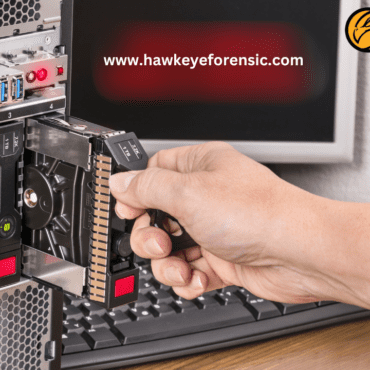Encryption is critical in digital security because it protects sensitive information. By encrypting entire drive volumes, BitLocker, a widely used encryption solution developed by Microsoft, provides a strong protection mechanism. It assures that even if a device enters into the hands of an unauthorized person, the data is inaccessible without the decryption key. However, the use of BitLocker in forensic investigations presents distinct obstacles and opportunities. This in-depth study will delve into BitLocker’s security features, best practices in forensic investigations involving encrypted data, and effective decryption procedures.
BitLocker Encryption
BitLocker works by encrypting whole disks using AES or a combination of AES and a diffuser. It uses symmetric encryption and a key known as the Full Volume Encryption Key (FVEK) to encrypt and decrypt data. BitLocker employs another key known as the Volume Master Key (VMK) to access this FVEK, which is further encrypted and stored in the encrypted volume header.
Security Measures of BitLocker
- TPM (Trusted Platform Module): BitLocker is frequently integrated with TPM, a hardware component that securely holds cryptographic keys. It ensures the system’s integrity and safeguards against assaults such as tampering or illegal access.
- Pre-Boot Authentication: BitLocker can be configured to demand authentication before the operating system boots using a PIN, USB key, or both. This adds an additional degree of security, ensuring that even if the device is taken, the data is inaccessible without the proper credentials.
- Secure Boot: Secure Boot integration ensures that only trusted firmware and operating system components are loaded during the boot process, preventing unwanted changes that could compromise security.
Best Practices in Forensic Investigations Involving BitLocker
- Preservation of Evidence: It is critical in forensic investigations to keep the encrypted drive in its original state. Maintaining the integrity of evidence requires creating a forensic picture of the encrypted disk without modifying the data.
- Recovery Key Acquisition: BitLocker users should maintain and securely store recovery keys in a centralized location. These keys are essential for forensic professionals who are attempting to decode data during an investigation.
- Specialized equipment: Forensic professionals decode BitLocker files using specialized software and equipment. To access the encrypted data, these programs attempt to recover or brute-force the decryption keys.
- Legal Compliance and Documentation: Legal criteria must be met in forensic investigations involving encrypted data. It is critical for legal admissibility to document the entire process, including steps taken, instruments employed, and technique used.
Challenges in BitLocker Forensics
Despite its strong protection, BitLocker poses difficulties in forensic investigations. Forgotten passwords, hardware issues, and out-of-date recovery keys can all thwart decryption attempts. Furthermore, modern attacks that target flaws in encryption methods or implementation may make it impossible to access encrypted data.
Debunking 5 Common BitLocker Myths: Separating Fact from Fiction
Myth 1: BitLocker Is Unbreakable and Impeccably Secure
Reality: BitLocker provides strong encryption, but it is not impervious to potential security flaws or intrusions. The quality of the encryption key and the use of other security mechanisms like TPM integration, PINs, or USB keys are what give BitLocker its strongest security. However, competent attackers might use cutting-edge methods to try and crack the encryption if they had the time, money, and know-how.
Myth 2: BitLocker Guarantees Data Recovery in All Scenarios
Reality: Preventing unwanted access to data is BitLocker’s main goal. Accessing encrypted data becomes difficult in situations where recovery keys are lost, passwords are forgotten, or device malfunctions occur. Even though Microsoft offers recovery methods, such as using an Active Directory integration key or recovering data, data recovery isn’t always possible, especially if you don’t have the required credentials or keys.
Myth 3: BitLocker Slows Down System Performance Significantly
Reality: There may be a slight speed hit when BitLocker encryption is activated, particularly during the initial encryption or decryption procedures. But with newer hardware and encryption algorithm improvements, the effect on performance is usually negligible and barely perceptible in everyday use.
Myth 4: BitLocker Only Works on Specific Windows Editions
Reality: BitLocker is compatible with several Windows editions, mostly Pro and Enterprise. It’s not exclusive to these editions, though. Windows 10 Home edition, for instance, also includes BitLocker, although through device encryption rather than the full feature set available in higher-tier editions.
Myth 5: BitLocker Is Too Complex for Everyday Users
Reality: BitLocker has sophisticated encryption features, but because Microsoft has simplified the interface, it is comparatively easy for regular users to set up and maintain. Enabling BitLocker and managing encrypted drives may be done by non-techies with the help of guided wizards and straightforward instructions.
Conclusion
BitLocker is a robust encryption technology that ensures data protection for a large number of users and enterprises. However, working with encrypted data in forensic investigations necessitates specialized knowledge, equipment, and strict adherence to severe processes in order to successfully access and analyze information. Understanding BitLocker’s security features, following best practices, and utilizing specialized forensic tools are essential for navigating the complexity of BitLocker encryption during forensic investigations.
The field of encryption and forensic techniques will develop more as technology advances. Keeping abreast of the most recent developments and consistently refining forensic methods are essential to handling encrypted data efficiently and guaranteeing exhaustive and legal investigations.





Post comments (0)